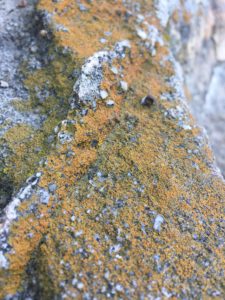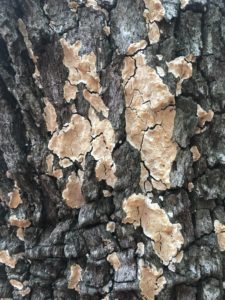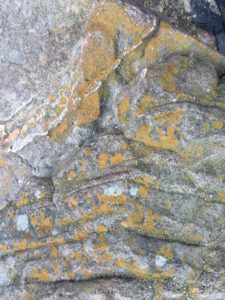Written by Hannah Ayala — Extension Assistant
Have you ever seen a crusty object or a thin layer growing on your trees or rocks? We’re here to tell you NOT to panic. It might just be lichen, which is not completely a fungi or a bacteria. Lichens are actually made up of a symbiotic relationship between fungi and green algae or cyanobacteria (or even all three!). The alga feeds the fungus through photosynthesis, while the algae receives some food and support from the fungus.
Lichens commonly grow on limbs, branches, and tree trunks of certain tree species. Lichens appear as surface growths that are usually grey or grey-green in color. Three forms of lichens exist – crustose (flat type of growth), foliose (leaf-like but with a prostrate growth), and fruticose (bush-like and erect, or hanging growth).
Lichen found on various surfaces outside the lab
Photo credit: Christina Lanzoni
Lichens grow under conditions of high light intensity. Heavy lichen growth is often an indication of poor tree vigor as a result a cultural problem or stress. Lichens are NOT parasitic to the tree itself, though heavy growth may begin to restrict gaseous exchange from the limb or twig, and can start to block light from reaching the plant’s surface.
There are currently no chemicals to control lichen growth. The best way to reduce lichen growth is to focus on improving the tree’s vigor and encouraging the growth of a dense canopy, which will reduce light penetration to the surfaces. Fertilization and timely irrigation can be considered strategies for tree vigor improvement. As the canopy density increases, shading will reduce the photosynthetic capacity of the alga, and, over time, the presence of the lichens should be decreased.
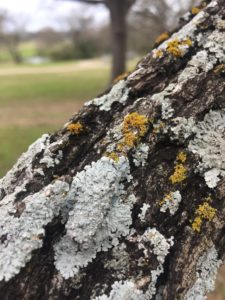
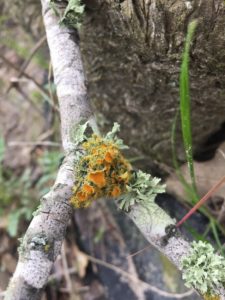
Lichen found on various surfaces outside the lab
Photo credit: Christina Lanzoni
The lichen growth that was present on some of the twig tissue indicates that this tree has experienced past physiological or cultural stresses that have weakened the tree and then the tree canopy, thereby encouraging lichen development.
So again, lichen are NOT plant parasitic fungi OR bacteria. They are just a little reminder to give your tree a little TLC.
References:
The Texas Plant Disease Diagnostic Laboratory
Want to learn more about lichens?
WHAT Wednesday video

